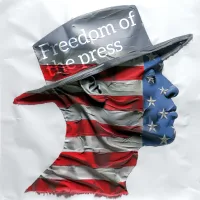Isabelle Leyva and Simon McCormack, authors of an article for The New York Civil Liberties Union, ask “Does adding more police deliver results?”
In our shows, movies, and novels, they are our heroes in blue. To elected officials, they are the go-to response to complex, unmet social needs, from mental health care, housing, and supportive schools, to safe neighborhoods and more. Police will save the day.
Or will they? The authors note:
- An analysis published in the journal, Criminal Justice and Behavior discovered that 66 percent of the crimes focused on in three popular police shows were murder or attempted murder. But a 2019 Vera Institute of Justice report found that fewer than five percent of arrests are related to serious violent crimes.
- Police kill more than 1,000 people in America every year — disproportionately Black and Brown people. Between January and March of this year, there were just four days when police did not kill someone.
- In New York, police often violently confront and stifle peaceful protesters. Officers too often target racial justice protesters while allowing white supremacist and far-right demonstrators to protest without interference.
- In New York City, the NYPD is central to the effort to destroy homeless encampments. This cruel initiative provides no long-term solutions for unhoused New Yorkers. Instead, it funnels people into notoriously violent and inhumane shelter systems, and makes their lives on the street even more difficult.
- Police also play a key role in reinforcing gentrification. Studies have documented heightened police enforcement in gentrifying neighborhoods.
The article concludes:
It’s time we stopped asking police to be the simple catchall solution to so many complicated problems. We all want safe communities. But we know that adding even more police has a negligible impact on crime rates, and that there is no evidence that criminal system reforms or progressive prosecutors have fueled increases in crime. New York needs proven and effective public safety solutions, including better jobs, schools, homes, and health care — all of which would do more to lower crime rates than further relying on police.
Isabelle Leyva is a Field Organizer,
Simon McCormack is a Senior Writer


